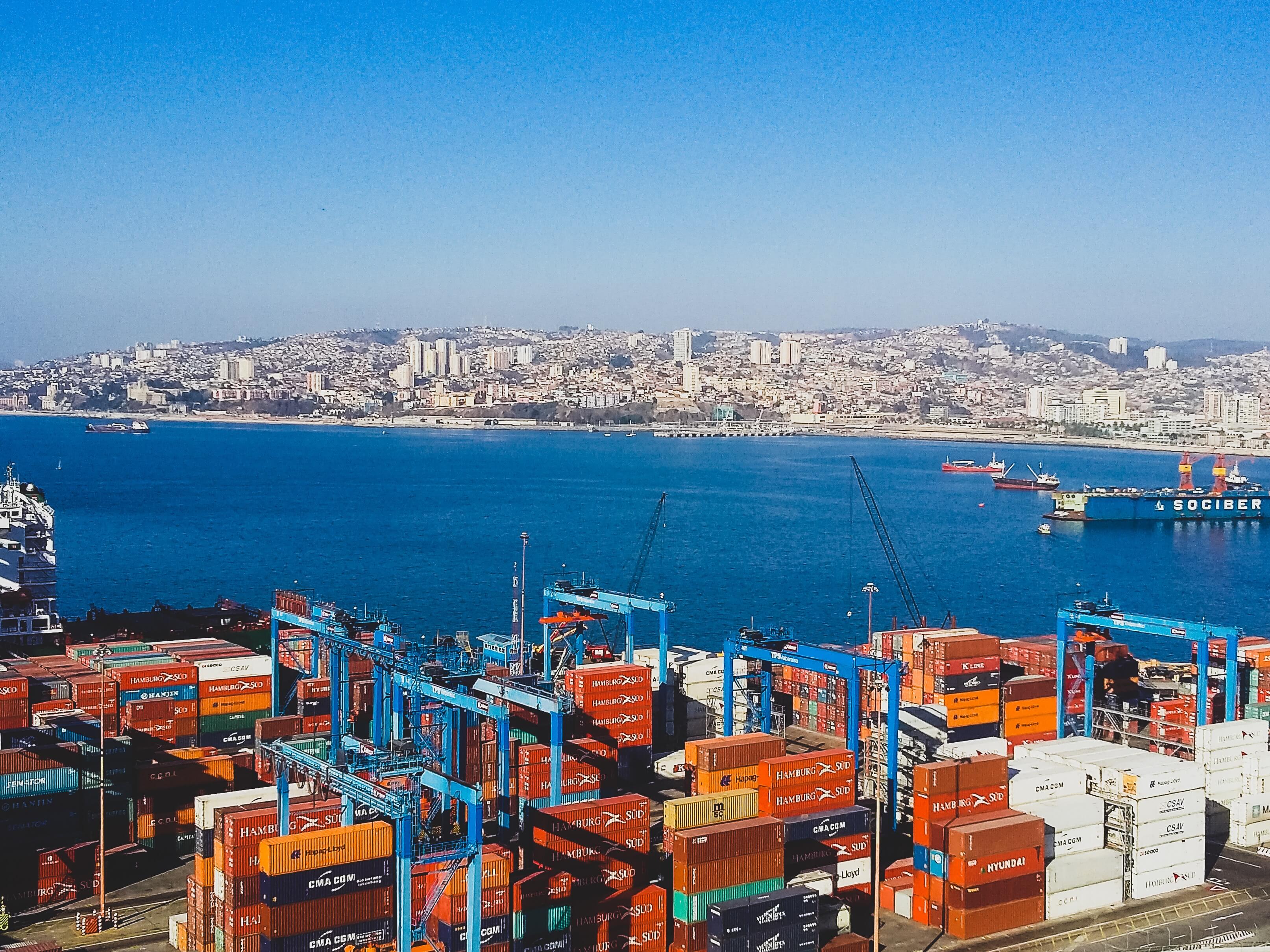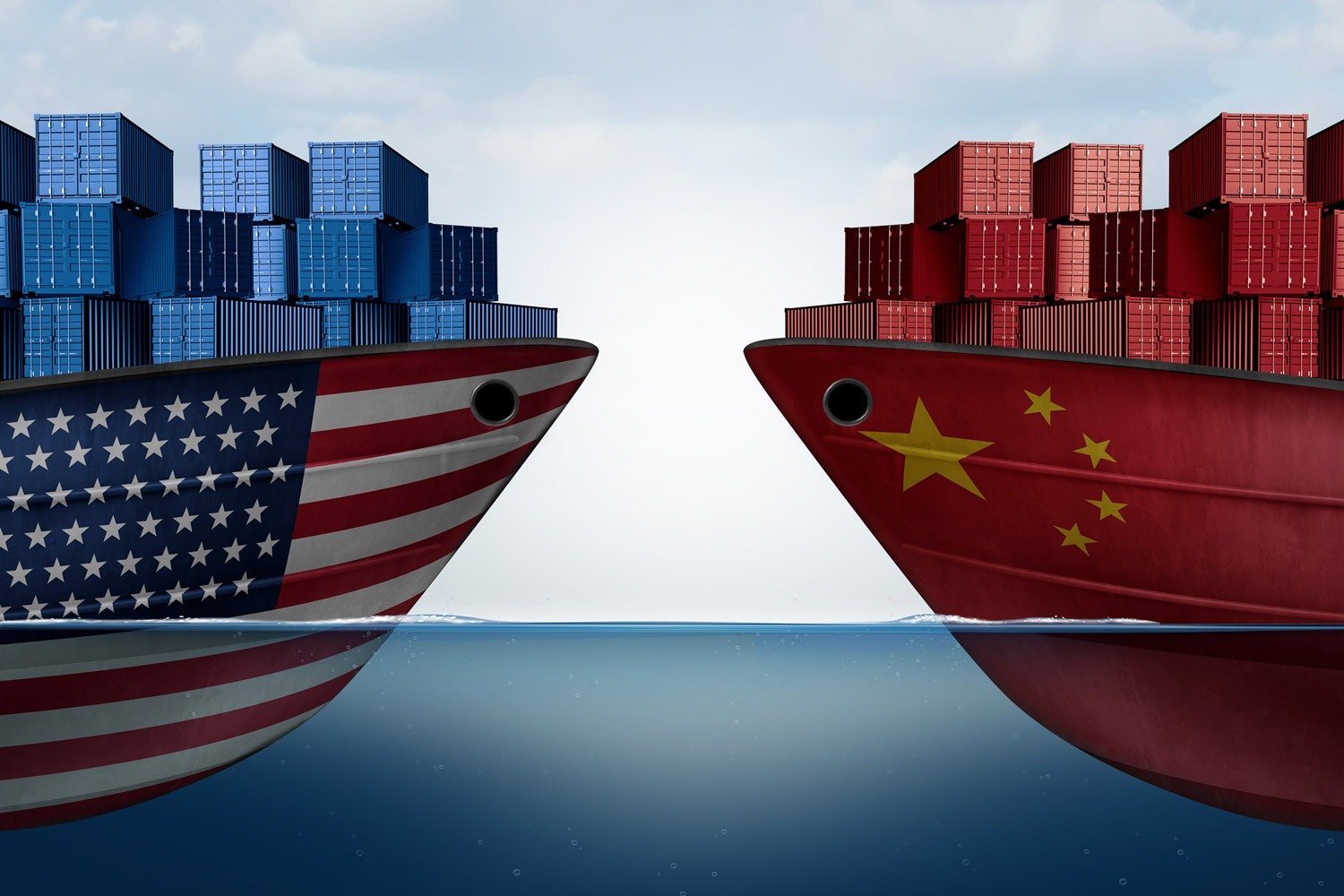US President Donald Trump likes container tariffs! Since he entered the Oval Office in January 2017, his actions saw the ratio of US imports covered by some form of trade protection rise from 2.3% to 14,9%. So far, the US has already slapped tariffs on $250bn worth of Chinese products and has threatened tariffs on $325bn more including on shipping containers and equipment. China, for its part, has set tariffs on $110bn worth of products – as a consequence, the value of China’s share of US imports is already falling.
The price of shipping a container from China to the US has already risen a lot in the last year. Chinese exporters have been rushing to get goods to the United States before new container tariffs kick in due to uncertainty. US companies are now seriously looking to remap their supply chain out of China, but for now, they have been front-loading cargo at US west coast ports. The stockpiling of goods results in rising Demurrage charges – containers that usually stacked three or four high after being unloaded were piled seven high, said Steven Hughes, CEO of HCS International.
Some companies do now move their supply chain from China to Vietnam, Malaysia or event West Africa to avoid tariffs on imported goods from China. Now with Donald Trump’s newest announcement, tariffs force shipping companies to pay more for the equipment such as containers and chassisWhat is a chassis? Chassis, in freight & logistics, refers to a skeleton framework with wheels on it used to move containers. It is also called intermodal chassis or container chassis. Similar to ... More which Mark DePasquale can confirm.
Container tariffs update: What Mark DePasquale & the NPSA have to say

Mark, as the CEO of the NPSA, is the representative of most container owners in the US. With his latest newsletter (sign-up here) he answered questions on the proposed container tariffs he received by several NPSA members:
As was previously reported, HTSUS Subheading 8609.00.00 Containers, is one of 3,805 subheadings on the proposed product list having an approximate annual trade value of $300 billion. The National Portable Storage Association (NPSA) is finalizing our written testimony to be submitted on June 17, 2019. We have already notified The United States Trade Representative to appear in front of the Section 301 Committee at the US International Trade Commission in Washington, DC. We have been notified that our oral testimony will take place on June 17, 2019. In our oral testimony, the NPSA will explain why imposing increased duties would cause disproportionate economic harm to US interests, including small- or medium-size businesses and consumers. After the last day of the public hearing, those testifying have seven seven days to submit post-hearing rebuttal comments.
If we are not successful in the removal of HTSUS Subheading 8609.00.00 Containers, when will the tariff be implemented?
It is very likely that the announcement of the final list of subheadings, and any implementation of a tariff, will not take place until after the seven-day post-hearing comments are submitted. If the oral testimony takes place through the end of the week of June 17, then an announcement can take place any time after July 1st. Keep in mind that the date of the announcement does not have to be the same date as the tariff implementation. Keep an eye on the news with regard to the tariff discussion as it relates to $300 billion.
If the tariff is implemented, when will I have to pay?
At the time the importer of record makes Customs entry. In most cases, containers arrive into the United States laden with cargo as “instruments of international traffic”, and as long as they remain as such, they are not subject to any duties or tariff. When a container is withdrawn or diverted from use as an instrument of international traffic in the United States, and sold into the domestic market, it is at this time that the importer of record is required to make Customs entry of the container, notify CBP, and mark the container as prescribed by CBP. Containers arriving into the United States, empty to be”domesticated“, are treated like any other merchandise and subject to the customs laws of the United States, including the obligation to make customs “entry” and pay duties, if any.
If the container tariffs are implemented, will it be 25% for sure?
The action taken by the USTR indicates a tariff of “up to 25%”. It is possible that the administration could start lower and end up at 25% at a later date. We saw this in trench 3 when the initial tariff was 10% in 2018 and then raised to 25% in May of 2019. We remain hopeful that USTR will once again remove HTSUS Subheading 8609.00.00 Containers off this list as they did in trench 2 last year.
More container tariffs in the future?

“The escalation of the trade war will continue to affect container shipping”, says BIMCO chief shipping analyst Peter Sand. “While President “Trump may claim China is paying for the container tariffs, this is not what we see happening in the real world”, Sand continues. “We see a much more nuanced picture with US importers paying the bulk share of increased costs”. It seems likely that tariffs will touch more Chinese goods in the near future and it will take time (or it is not possible at all) to build up the production capacity to meet US demand. Uncertainty stays on a high level although companies consider re-routing products through countries like Malaysia or Taiwan. Best way to keep up-to-date is to sign-up for the NPSA newsletter or reach out to them directly if you’re a container owner in the United States. Please leave a comment or send us an email if can add something useful to the article or in case you have a question.
Update 25.06.2019:
Some highlights of what Mark DePasquale said at his oral testimony that he presented to the section 301 committee.
Mark DePasquale on how NPSA members contribute to the US economy …
The proposed tariff of up to 25 percent on containers classified under HTSUS 8609 would be devastating to my members and our industry. Our members have literally created an industry in the United States that previously didn’t exist by utilizing hundreds of thousands of older marine containers, that might otherwise be sent to the scrap yard or a landfill. When marine cargo containers reach the end of their useful life in international trade, the members of the NPSA purchase them and subject them in many cases to extensive repairs and modifications. As a result of the hands-on, blue-collar work performed by NPSA members, these containers essentially get a new lease on life as portable storage units, offices on construction sites, charitable donation sites, and for use during disaster relief efforts. NPSA members also supply repurposed containers to FEMA, the American Red Cross, DOD, FAA, GSA and other public agencies. In the case of the U.S. military, repurposed containers are used to transport munitions, as hospitals on the battlefield, as air-traffic control towers, as mobile communication units, and in countless other ways.
Mark DePasquale on alternatives to importing containers from China …
Although these additional costs will be imposed on middle-class, small businesses, little, if anything, will be gained in return. While containers are imported and modified in the U.S., there has not been an industry that manufactures marine containers in the United States for more than 30-years. And such an industry will not suddenly spring up out of nowhere if tariffs are imposed. Thus, the supply of used shipping containers is the backbone of our industry. Indeed, we have no other sources of supply.
Nothing has changed since shipping container were the subject last year of a prior determination in this section 301 investigation …
Finally, shipping containers, classified under HTSUS 8609, were the subject last year of a prior determination in this Section 301 investigation. That determination was based on evidence, including testimony, collected by the Section 301 Committee from members and customers of the U.S. and global container industries. The record assembled by the Committee established that (a) marine containers are low-tech products and the manufacturing process used to make containers does not involve high risks of IP infringement, including theft of trade secrets, or forced technology transfer, (b) marine cargo containers produced in China are not subsidized or otherwise supported by the “Made In China 2025” program, (c) no company located in the United States produces marine cargo containers from “scratch” for use in international commerce, (d) the imposition of a tariff on shipping containers produced in China will not spur investment in container manufacturing in the United States, and (e) container manufacturing in third countries is relatively non-existent. At no time during this prior segment of the Section 301 proceeding did anyone appear before the Committee to support the imposition of tariffs on shipping containers of any kind, including marine cargo containers. In the period since the Section 301 Committee last considered these issues, nothing has changed. A tariff on containers would not address China’s acts, policies, and practices related to technology transfer, intellectual property, and innovation. Instead, it would “cause disproportionate economic harm to U.S. interests, including small- or medium-sized businesses and consumers.”




